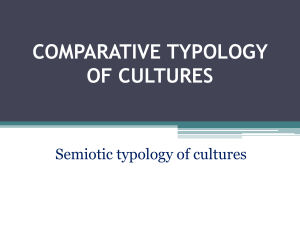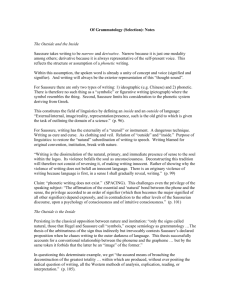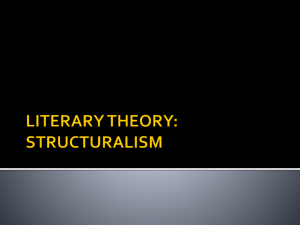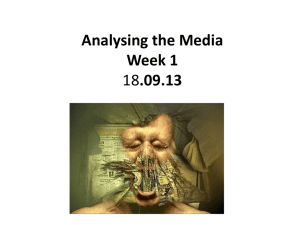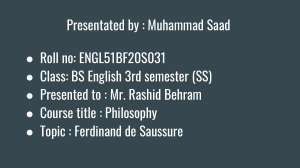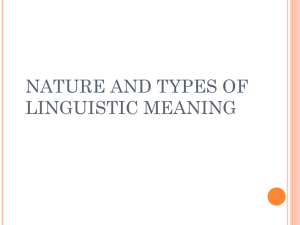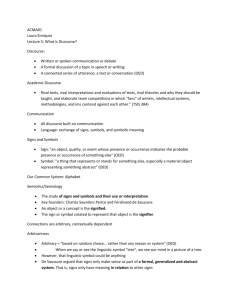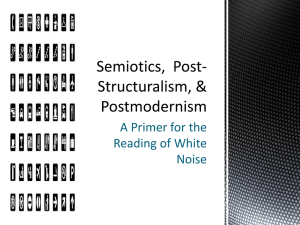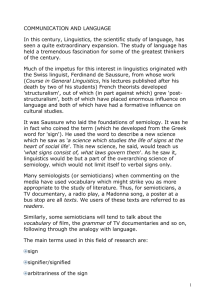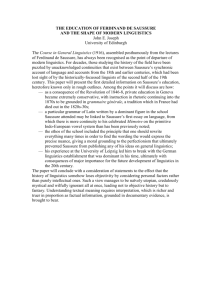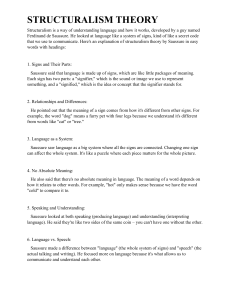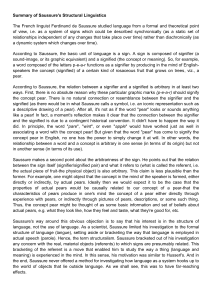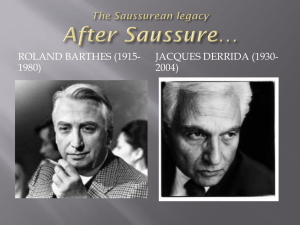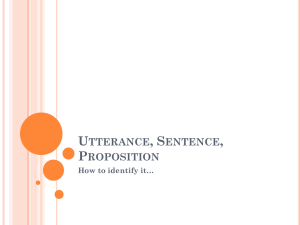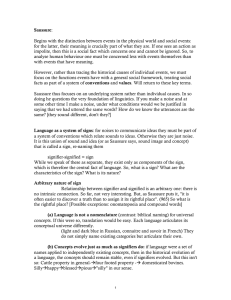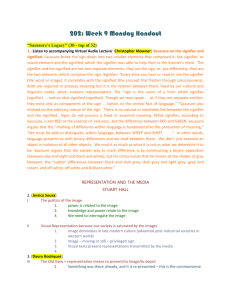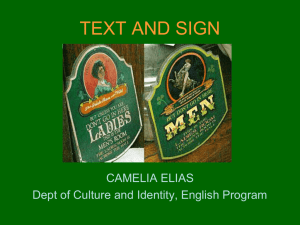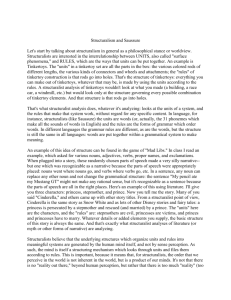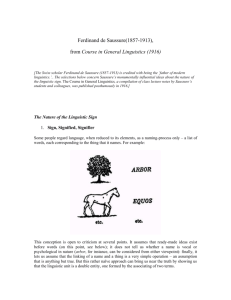Media Theorist – Ferdinand de Saussure & CS Pierce Ferdinand de
advertisement
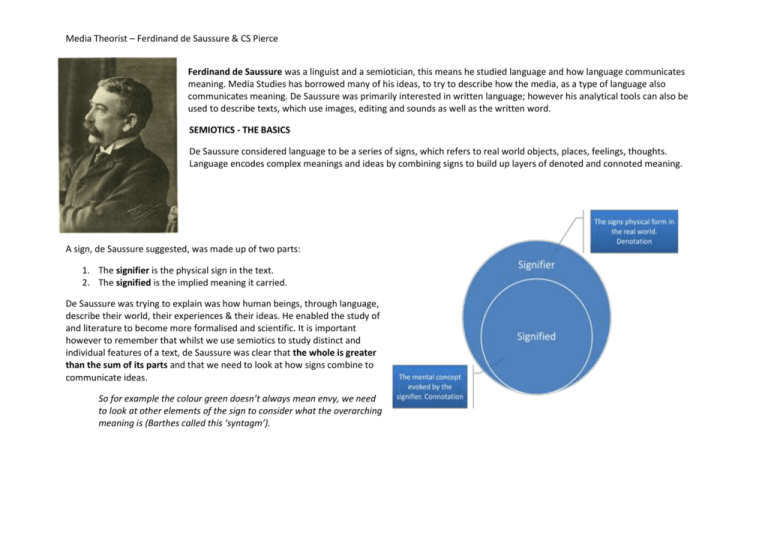
Media Theorist – Ferdinand de Saussure & CS Pierce Ferdinand de Saussure was a linguist and a semiotician, this means he studied language and how language communicates meaning. Media Studies has borrowed many of his ideas, to try to describe how the media, as a type of language also communicates meaning. De Saussure was primarily interested in written language; however his analytical tools can also be used to describe texts, which use images, editing and sounds as well as the written word. SEMIOTICS - THE BASICS De Saussure considered language to be a series of signs, which refers to real world objects, places, feelings, thoughts. Language encodes complex meanings and ideas by combining signs to build up layers of denoted and connoted meaning. A sign, de Saussure suggested, was made up of two parts: 1. The signifier is the physical sign in the text. 2. The signified is the implied meaning it carried. De Saussure was trying to explain was how human beings, through language, describe their world, their experiences & their ideas. He enabled the study of and literature to become more formalised and scientific. It is important however to remember that whilst we use semiotics to study distinct and individual features of a text, de Saussure was clear that the whole is greater than the sum of its parts and that we need to look at how signs combine to communicate ideas. So for example the colour green doesn’t always mean envy, we need to look at other elements of the sign to consider what the overarching meaning is (Barthes called this ‘syntagm’). Media Theorist – Ferdinand de Saussure & CS Pierce Charles Sanders Pierce was an American thinker, who amongst many other things thought about how to bring logic to bear on language. He took de Saussure’s ideas of signifier and signified and tried to describe how extra meaning (the signified) becomes associated with particular signs (signifiers) He suggested three ways: 1. The Icon: the signified encodes meaning through a close resemblance to the referent – this is particularly relevant in photography / cinematography, less so in written language; although onomatopoeia is an example of an icon, as it when spoken, it sounds like the sound to which it refers. 2. The Index: The signifier is linked to the signified though cause and effect. If we hear thunder we know it is caused by lightening, if we see a character sweating and out of breath this is an index of exertion (exercise). 3. The Symbol: A sign that has no direct link with what it signifies, the associations are conventional, which must be learned. So a white dress on a woman walking into a church is a symbol of marriage / the bride. However, in oriental cultures this would be a symbol of a funeral / mourning; there red is the colour of marriage, white is the colour of death. o These signs are cultural in original and require shared cultural experience in order to understand them. Glossary of terms to use in your analysis Encoding – Texts are encoded with meaning by their producers Decoding – Texts are decoded by their audiences, where meaning is read / interpreted Denotation – The literal or primary meaning of a sign, in contrast to the feeling or ideas that it suggests Connotation – The suggested and implied meaning of a sign, in contrast to its literal meaning Sign – a unit of meaning in a text (these can be cultural, technical or linguistic) o Signifier – The physical sign itself (a sound, word, image...) as distinct from its meaning o Signified – The meaning or idea suggested of implied by a sign, as distinct from the physical form in which it is expressed. Icon - a sign whose form directly reflects the thing it signifies Index - an indicator of another event / action Symbol – a sign which relates, by cultural convention, to an idea or meaning
